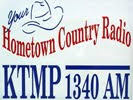Photo Courtesy BLM
The Bureau of Land Management (BLM) plans to begin removing excess wild horses from the North Hills Wild Horse Management Plan Area (WHMPA) near Enterprise, Utah, and the Sulphur Herd Management Area (HMA) near Milford, Utah, in December.
“These two gathers will help us maintain healthy conditions for the wildhorses on the range.” said Acting Cedar City Field Office Manager Randy Trujillo. “By taking additional fertility control measures, these gathers should also allow us to extend the time before we need to conduct another gather to remove excess wild horses.”
The BLM will begin gathering approximately 210 horses in the North Hills WHMPA on December 2. The WHMPA includes the North Hills HMA, which includes about 49,900 acres of BLM-administered, state and private lands in Iron and Washington counties, as well as the United States Forest Service (USFS) North Hills Wild Horse Territory, which covers approximately 24,029 acres. The Appropriate Management Level (AML) established for the North Hills WHMPA is a population range of 40-60 wild horses. The current estimated population of wild horses within the WHMPA, based on a count completed in January, is estimated at 250 wild horses.
The BLM will also gather additional wild horses from the North Hills that will be released back into the area after the mares are treated with a fertility control vaccine to slow population growth.
Members of the public are welcome to view operations once they begin. The BLM is planning to provide public observation of gather operations daily so long as the safety of the animals, staff, and observers is not jeopardized and operations are not disrupted. Those interested in participating in an escorted tour during the North Hills gather must meet at 6:00 a.m. at the Sinclair gas station at the junction of Highways 18 and 219 east of Enterprise. Current plans call for the North Hills gather to operate December 2 through 6, although weather conditions may affect the projected schedule. Participants must provide their own transportation, water and lunches. The BLM recommends that the public dress for harsh field conditions. Binoculars are strongly recommended.
The BLM plans to gather approximately 250 wild horses from the Sulphur HMA beginning December 13, 2010. The majority of these horses, approximately 220 animals, will be released back to the range following the gather. Of these, about 90 would be mares vaccinated with a fertility control vaccine to slow population growth. The Sulphur HMA covers approximately 265,676 acres of public, state and private lands, located in Beaver, Iron, and Millard counties. The AML for the HMA is 165 to 250 wild horses. The current estimated population of wild horses within the Sulphur HMA is 276.
AML is determined through land-use planning efforts that involve public participation, vegetation inventories and allocation of forage in terms of animal unit months; the BLM determines the appropriate number of wild horses that each HMA can support in balance with other uses of and resources on public land. Planning efforts include an inventory and the monitoring of all uses of the public rangelands.
Members of the public are also welcome to view operations on the Sulphur gather. Those interested in participating in an escorted tour must meet at 6:00 a.m. MST at the Border Inn located in Baker, NV on the Utah-Nevada border on U.S. Highway 6 and 50. Current plans call for the Sulphur gather to operate December 13 through 20, although weather conditions may affect the projected schedule. “Animals removed from the North Hills and Sulphur areas will be available for adoption through the BLM Wild Horse and Burro Adoption Program,” Trujillo said.
Horses from the North Hills WHMPA will be shipped to the Central Utah Correctional Facility in Gunnison and horses gathered from the Sulphur HMA will be shipped to the Delta Wild Horse Corrals.
Animals that are not adopted will be cared for in long-term pastures, where they retain their “wild” status and protection under the 1971 Wild Free-Roaming Horses and Burros Act. The BLM does not send any horses to slaughter. The gather and impacts are described and analyzed in the North Hills WHMPA
Wild Horse Gather Plan Final Environmental Assessment (EA) and the Sulphur Wild Horse HMA Capture, Treat and Release Plan Final EA. The EAs and the Decision Records are posted on the BLM website at www.blm.gov/ut. The BLM also will provide updates and information at the same web address on a regular basis throughout the course of the gather.
To learn more about the program or to obtain an adoption application, visit the BLM National Wild Horse and Burro website at http://www.wildhorseandburro.blm.gov/ .
The BLM manages more land - more than 245 million acres - than any other Federal agency. This land, known as the National System of Public Lands, is primarily located in 12 Western states, including Alaska. The Bureau, with a budget of about $1 billion, also administers 700 million acres of sub-surface mineral estate throughout the nation. The BLM's multiple-use mission is to sustain the health and productivity of the public lands for the use and enjoyment of present and future generations. The Bureau accomplishes this by managing such activities as outdoor recreation, livestock grazing, mineral development, and energy production, and by conserving natural, historical, cultural, and other resources on public lands.


















